Harvesting Muscle Strain
Epidemiology – Smaller Orchards
Research by the Northeast Center found that muscle strain conditions are by far the most common health problem seen in among orchard workers at eastern migrant health centers (Brower et al., 2009; Earle-Richardson et al., 2008).
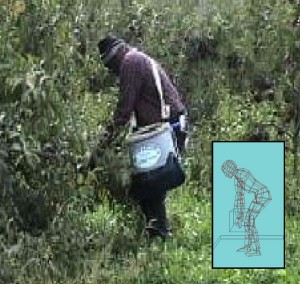 Moderate flexion-45º trunk angle – 23%
Moderate flexion-45º trunk angle – 23% of workday
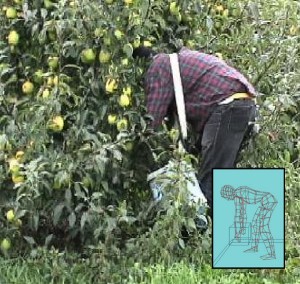 Severe flexion-70º trunk angle 4% of workday
Severe flexion-70º trunk angle 4% of workday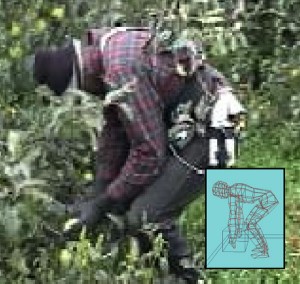 Standing with one or two legs bent – 25% of workday
Standing with one or two legs bent – 25% of workday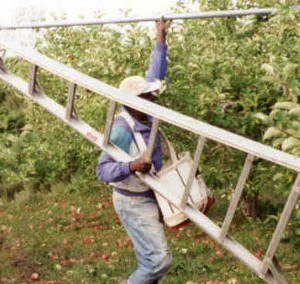 Worker carrying ladder to next tree. 4% of work day involved in this type of activity. Ladders are either aluminum or wood.
Worker carrying ladder to next tree. 4% of work day involved in this type of activity. Ladders are either aluminum or wood.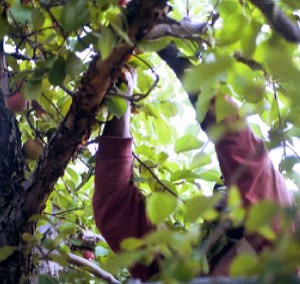 One or both elbows elevated – 60% of workday
One or both elbows elevated – 60% of workday(from: Fulmer et al., 2002; Earle-Richardson et al., 2004)
Clinical Key Point: Orchard workers with muscle pain are likely to suffer from ergonomic exposures and overuse.
A. Tree size varies widely, impacts muscle strain risk
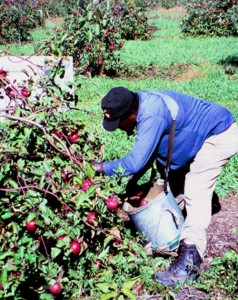
Dwarf (6′ high) trees
- 19% of production*
- Less reaching overhead
- More bending / kneeling
- Support-wire hazard
- Doesn’t require ladders

Semi-dwarf (8′-9′) trees
- 50% of production*
- Apples are farther apart than dwarf trees – more reaching
- Reaching and full bag strap on neck can cause strain.
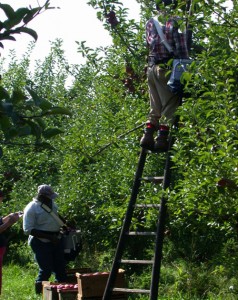
Standard (20′-23′) trees
- 29% of production*
- Much more ladder climbing
- More reaching
- Reaching with apples in bag
- More ladder lift and moving
- Fall hazard greater
*2007 census of Agriculture
Clinical Key Point: Knowing the tree size that the patient works in allows you to narrow down the ergonomic exposures.
B. Back and shoulder most commonly involved in orchard worker muscle strain
Mid-lower back, shoulder and upper back comprise 71% of orchard worker muscle strain
(7-state NEC study, 2003)
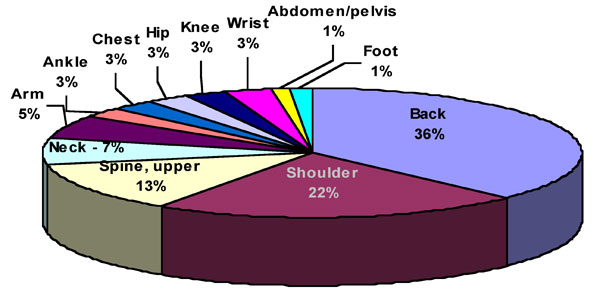
Clinical Key Point: When orchard workers present with back or shoulder pain, consider a careful review of ergonomic exposures.
Farmworker prevention and education links:
- NIOSH Simple Solutions for Farmworkers and Texas Department of Insurance, Safe Lifting
- NYCAMH/MCN CUIDATE! !Guia de ejercicios para el cuidado de tu cuerpo en el trabajo.
- NYCAMH/MCN Watch Out! Exercise guide for protecting your body during farm work.